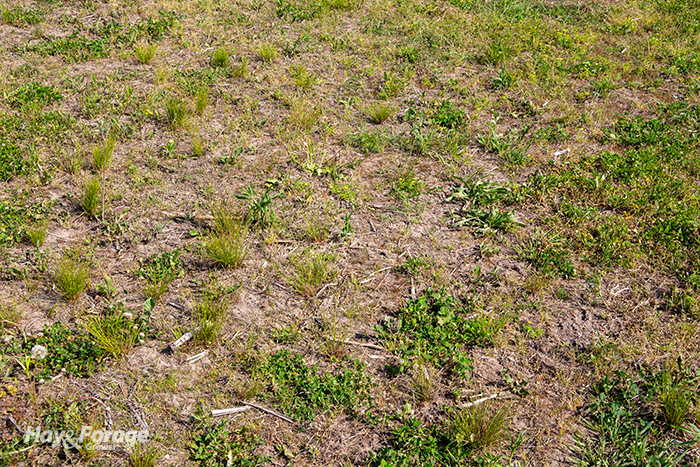
Generally speaking, wet spring conditions evolved into a dry summer and fall for a large part of the central U.S. While those early rains may have interfered with new alfalfa seedings and the first hay cuttings, late-season dryness could have shortened the grazing season and threatened forage preparing for winter dormancy.
Christine Gelley, Ted Wiseman, and Emma Matcham with The Ohio State University (OSU) encourage farmers to consider their options to support pastures and hayfields that have been affected by drought this year. Those include planting cover crops, frost seeding, and interseeding. In some cases, though, the best option will be to leave fields alone and let them rest until next spring.
“Pastures across the region show signs of wear — uneven growth, bare patches, and thin stands — while newly seeded alfalfa fields have struggled to establish due to poor planting conditions and unpredictable moisture,” the extension specialists report. “As winter approaches, now is the time to take action to protect the soil, improve forage stands, and plan for a more successful spring.”
Protect the soil
“Bare ground in pastures is more than an eyesore — it can lead to erosion, weed invasion, and mud,” the specialists write in an OSU Extension article. “To prevent further degradation, aim to cover exposed soil before winter sets in.”
They suggest seeding a fast-growing winter annual like cereal rye, which is relatively easy to establish with a no-till drill or by broadcasting seed. Ensure drills are properly calibrated to a 1- to 1.5-inch planting depth, depending on soil type and surface residue. Cereal rye can be planted in Ohio through early November, although planting dates will vary by region.
Frost seeding clovers is another solution to cover bare soil and is usually carried out in late February or early March. The goal is for freeze-thaw cycles to incorporate clover seed into the soil, eliminating the need for heavy seeding equipment. The specialists note drones and spinner seeders can be effective frost-seeding tools, even across large areas, which is especially beneficial to minimize damage on drought-stressed fields.
Where planting winter annuals or frost seeding clovers isn’t feasible, the specialists suggest mulching bare soil with hay or straw. They add that doing so may introduce residual forage seed to the field that will germinate and fill in bare spots come spring.
Reduce animal impact in pasture systems, especially where new forage has been established, and take vulnerable areas out of the rotation for the rest of the fall grazing season.
Test soil where forage will be established next year. Soil analysis can aid seed selection and will guide fertilizer applications for optimum planting conditions. The specialists note that planting high-biomass winter annuals on these fields can help dry soil faster in the spring.
Monitor new alfalfa
New alfalfa seedings may be at higher risk of winterkill in areas where wet spring conditions delayed planting and dry summer weather wreaked havoc on seedling emergence. The specialists add that established stands with fewer than 25 stems per square foot and/or less than 6 inches of fall growth are most susceptible to winterkill.
Interseeding grasses into thin alfalfa next spring may help boost forage yield and quality in both young and old stands. The specialists suggest other crops like oats and triticale can also help provide extra tonnage; however, timing and available moisture are critical interseeding factors.
Refrain from interseeding more alfalfa into older, thinning stands to avoid autotoxicity. The cause of alfalfa autotoxicity is largely unknown, but recent research from Michigan State University shows a stand’s risk level could be influenced by soil type and soil fertility. “Coarser soils may flush these compounds more quickly, while heavier soils may retain them longer,” the OSU specialists state.
“Whether managing pastures or alfalfa, rest and recovery are key,” the specialists conclude. “With thoughtful planning and timely action, farmers can rebuild forage systems and prepare for a more productive season ahead.”

